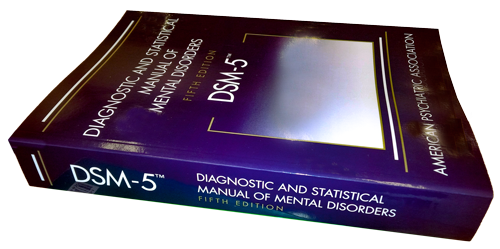How Do I Love My drugs?
Let Me Count the Ways…
In today’s society, alcohol or other substances (legal and illegal) are often used in social settings. Many people equate “partying” with using substances. Depending on the drug, sometimes it may be unclear as to whether the use is someone socializing or someone developing a problem.
 According to the Bible of mental health professionals, the Diagnostic and Statistical Manual of Mental Disorders, Fifth Edition (DSM-5), individuals who match certain diagnostic criteria can be considered having a substance use disorder.
According to the Bible of mental health professionals, the Diagnostic and Statistical Manual of Mental Disorders, Fifth Edition (DSM-5), individuals who match certain diagnostic criteria can be considered having a substance use disorder.
Standards vary very little according to the substance studied, with the exception that some (but not all) result in withdrawal symptoms that are often alleviated by the use of more of the substance a person is withdrawing from, which is considered one of the diagnostic criteria.*
The other general diagnostic criteria are as follows:
- The amount of the substance used increases over time or is used over a larger amount of time than was intended.
- Despite wanting to cut down or control use, the use continues.
- A lot of time is involved in obtaining the substance, using the substance, or recovering from using it.
- There is a strong desire (craving) to use the substance.
- Continuing use of the substance results in difficulties at work, school or home.
- Despite continued social or interpersonal problems related to drugs, the use continues.
- Social, occupational or recreational activities are given up because of the substance use.
- The substance is used in physically hazardous situations. (For example driving.)
- Despite persistent physical or psychological problems related to the drugs, the use continues.
- Tolerance, which may be either the need for more of the substance to achieve the desired result or a decreased effect with using the same amount of substance, occurs.
With the DSM-5, the severity of a substance use problem is identified by the number of matches a person has with the diagnostic criteria. Matching 2-3 symptoms is considered a mild disorder; 4-5 symptoms is considered moderate, and 6 or more symptoms is identified as severe.
As the number of diagnostic criteria increases for an individual, so does the control that the substance has over that person’s life. What started as a party or a perceived solution to a problem can sometimes result in what looks more like being enslaved by a substance.
People often minimize or downplay the amount of their drug use. By taking an honest look at the severity of a problem, an individual can decide if it’s time to seek professional help and break the bondage of addiction.
If you or a loved one are struggling with addiction call: 833.551.2356 for more information about
how Gulf Breeze Recovery could help you or your loved ones today.
Find out more! Check out our latest posts:
Alcohol Abuse Disorder kills more people than any drug!
February 15, 2021
Early Alcohol Sensitivity Can Help Predict Predisposition to Alcohol Use Disorder
January 29, 2021
Researchers Identify Role of Key Brain Signaling Protein in Alcohol Use Disorder
January 29, 2021
College Students Who Returned Home Due to Pandemic Drinking Less
January 29, 2021


 According to the Bible of mental health professionals, the Diagnostic and Statistical Manual of Mental Disorders, Fifth Edition (DSM-5), individuals who match certain diagnostic criteria can be considered having a substance use disorder.
According to the Bible of mental health professionals, the Diagnostic and Statistical Manual of Mental Disorders, Fifth Edition (DSM-5), individuals who match certain diagnostic criteria can be considered having a substance use disorder.





